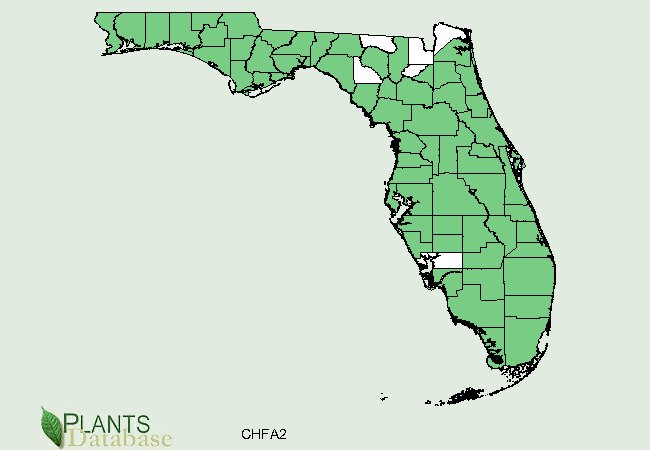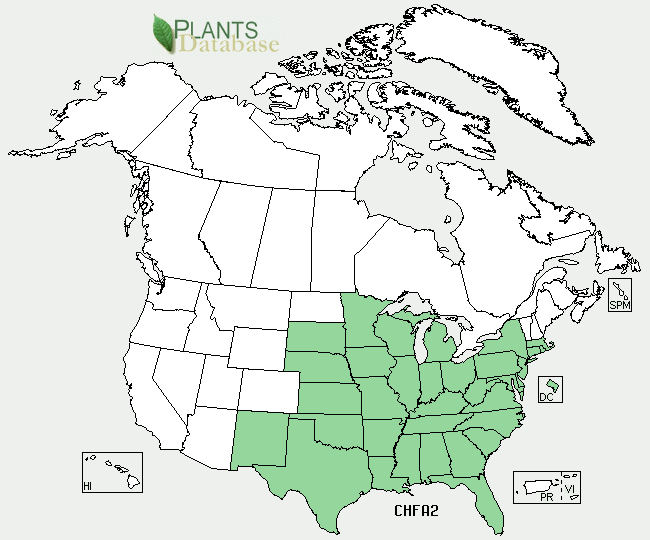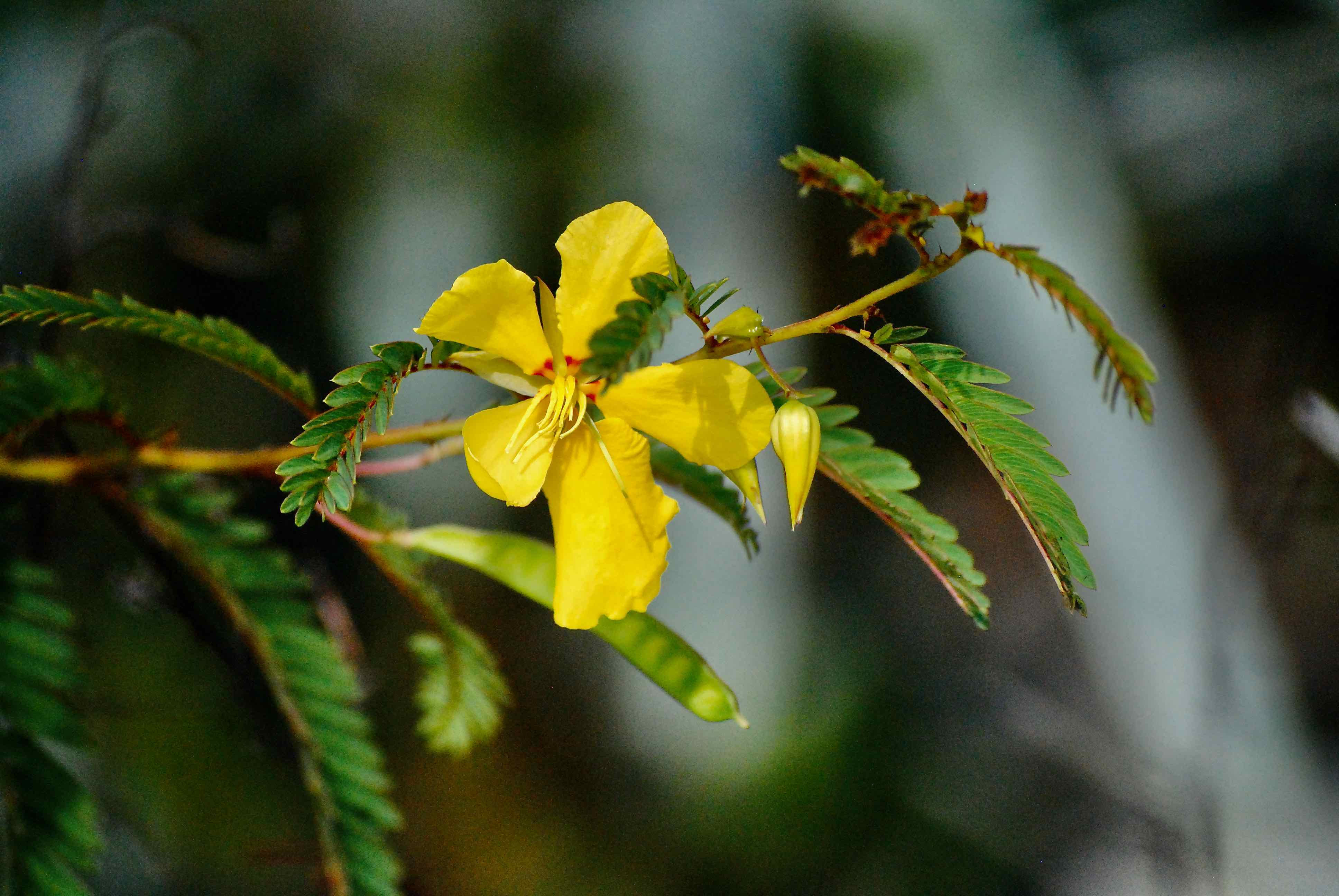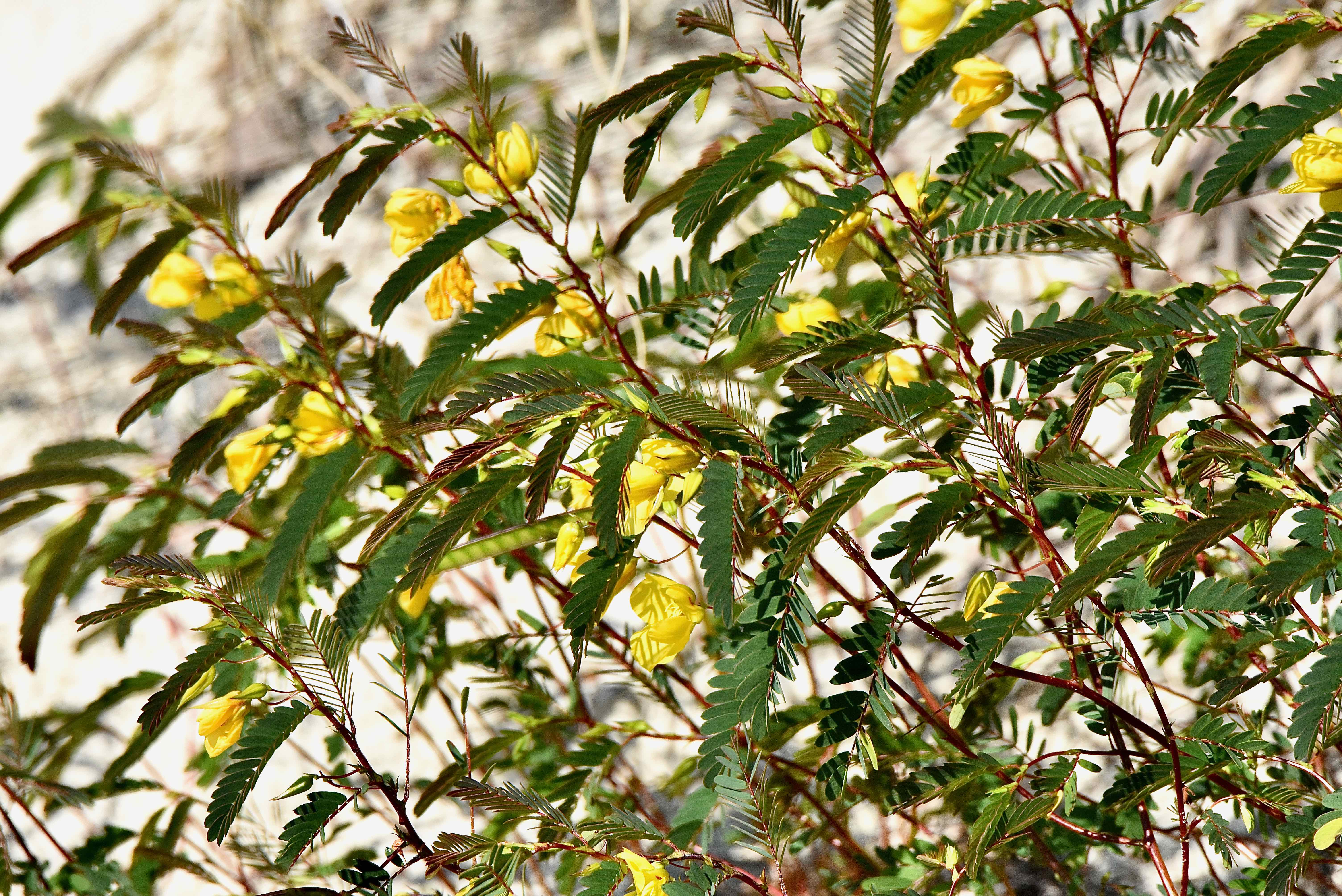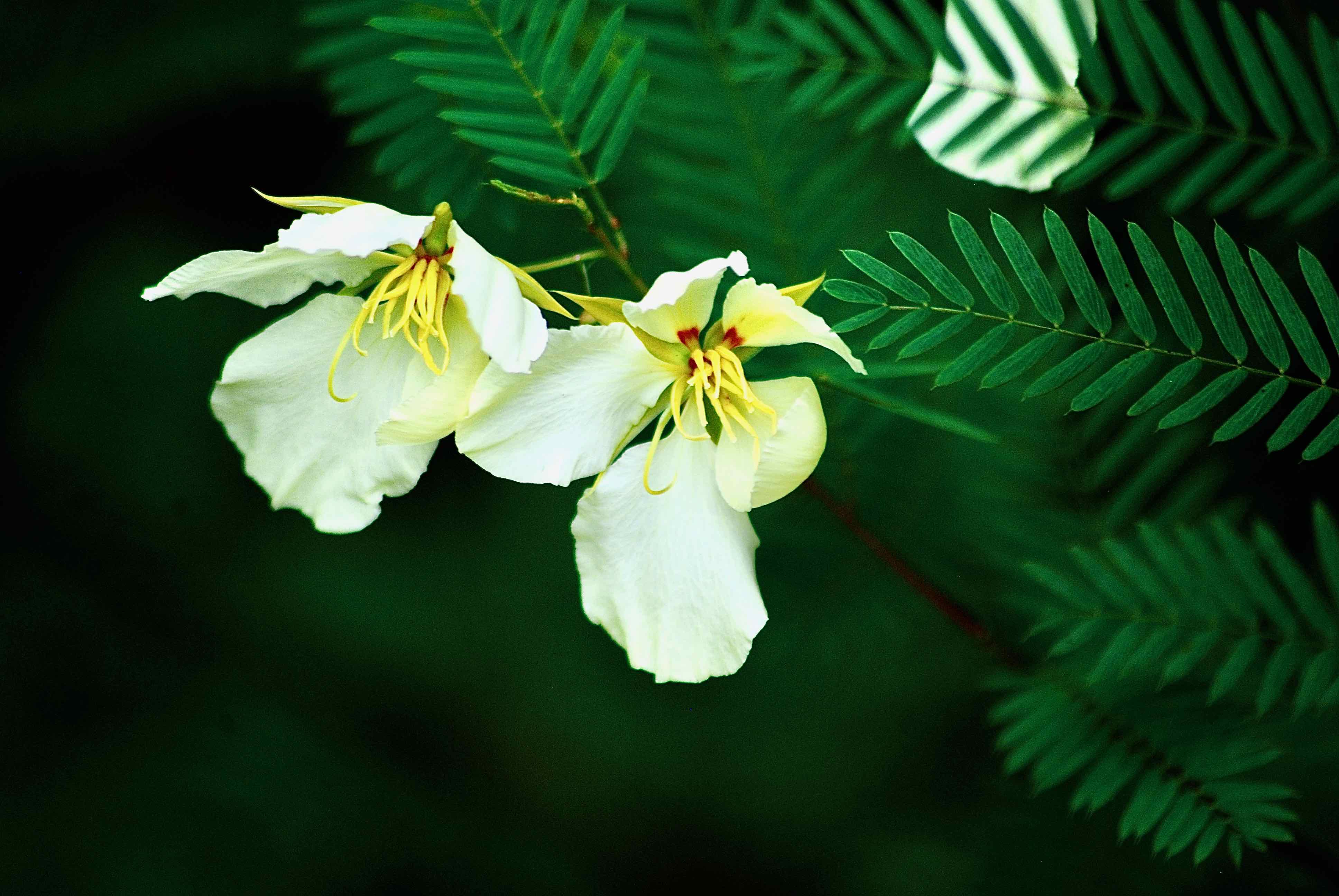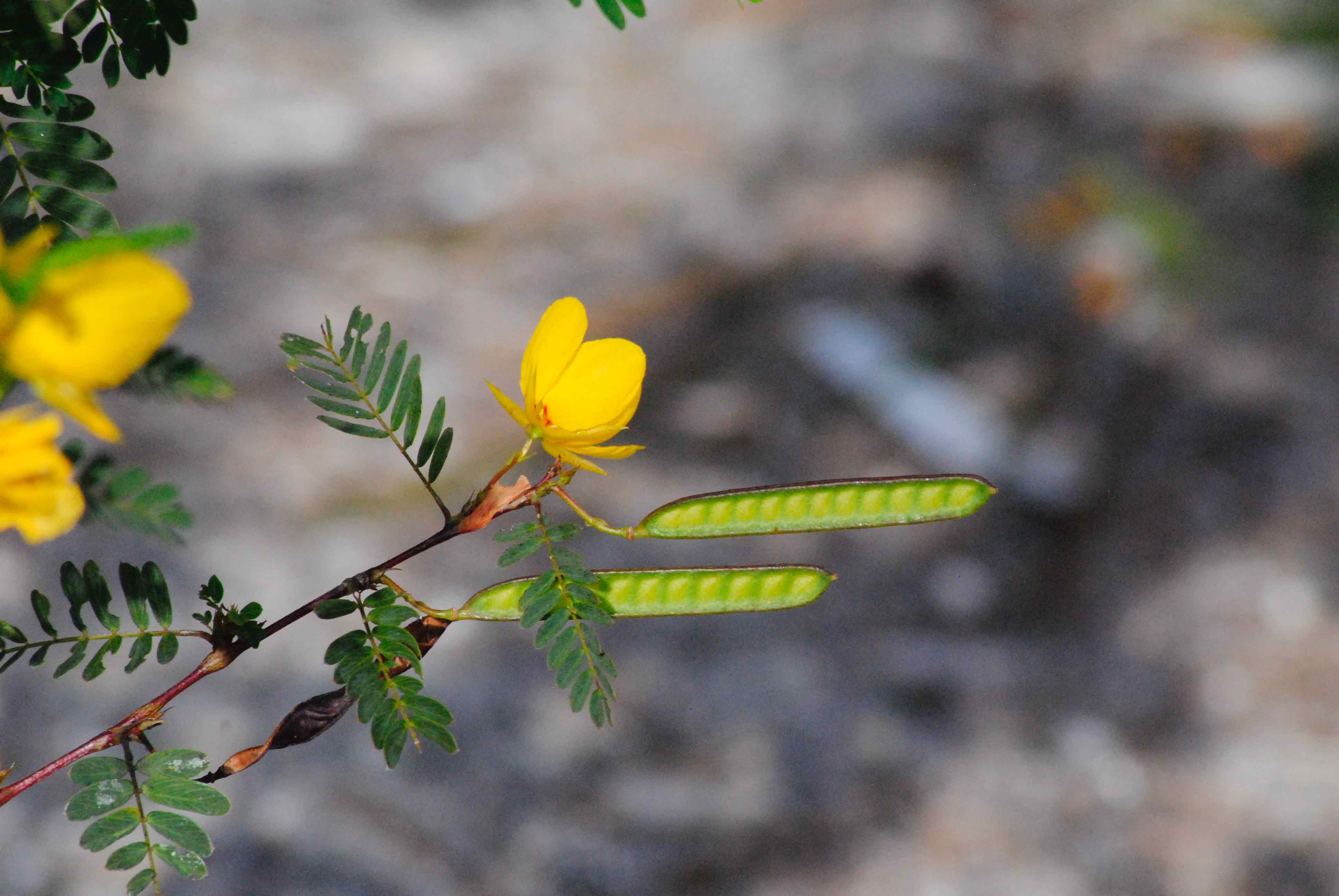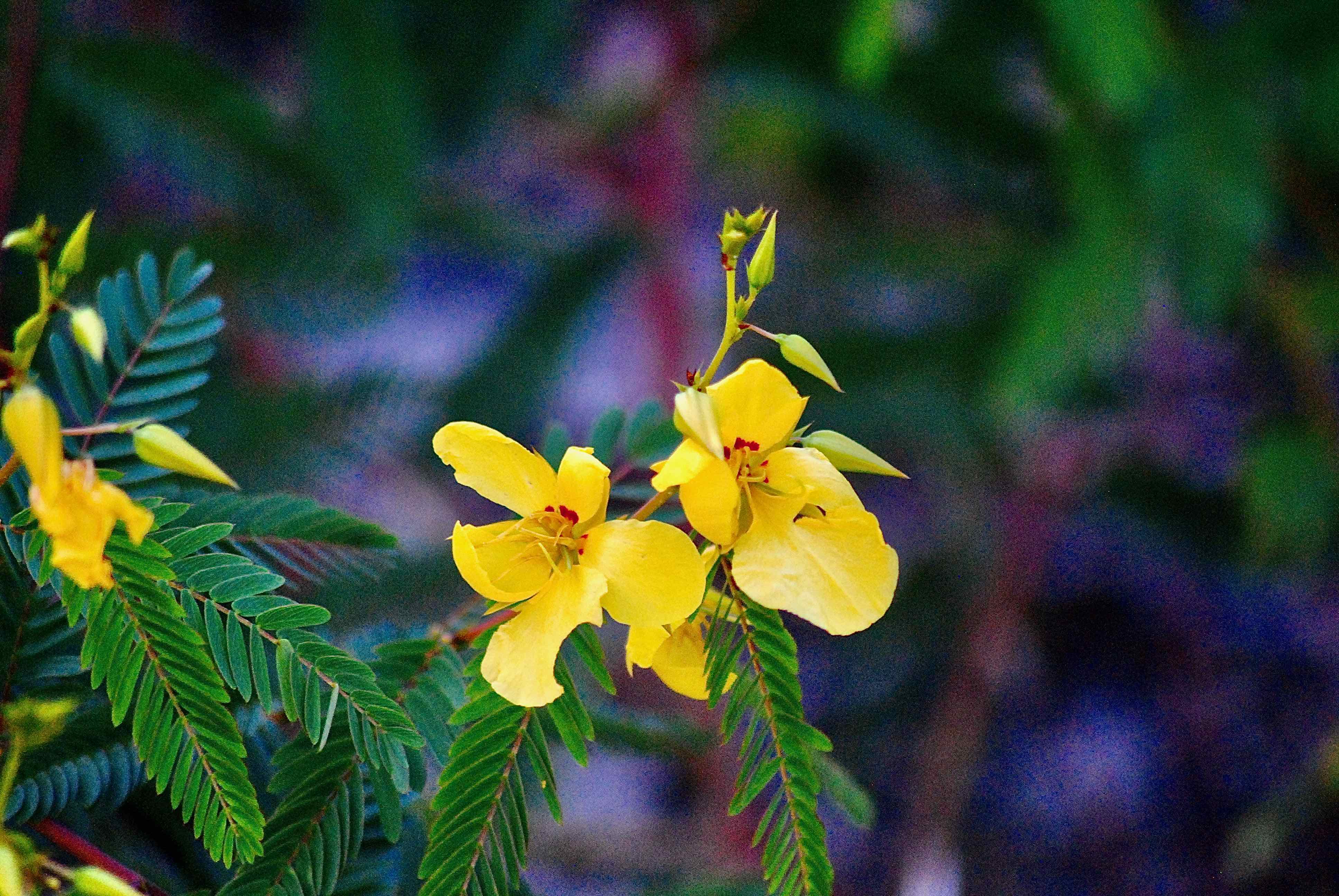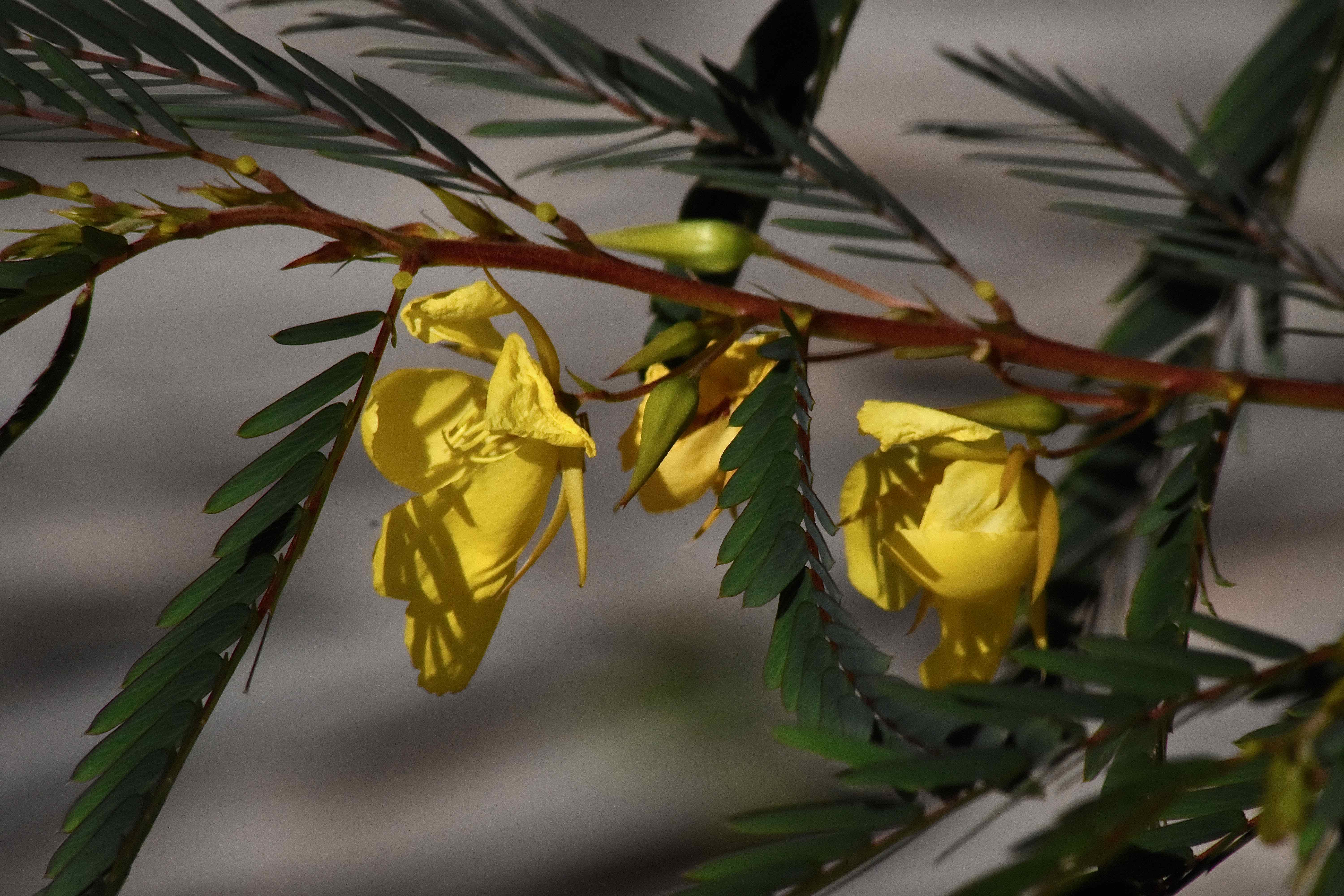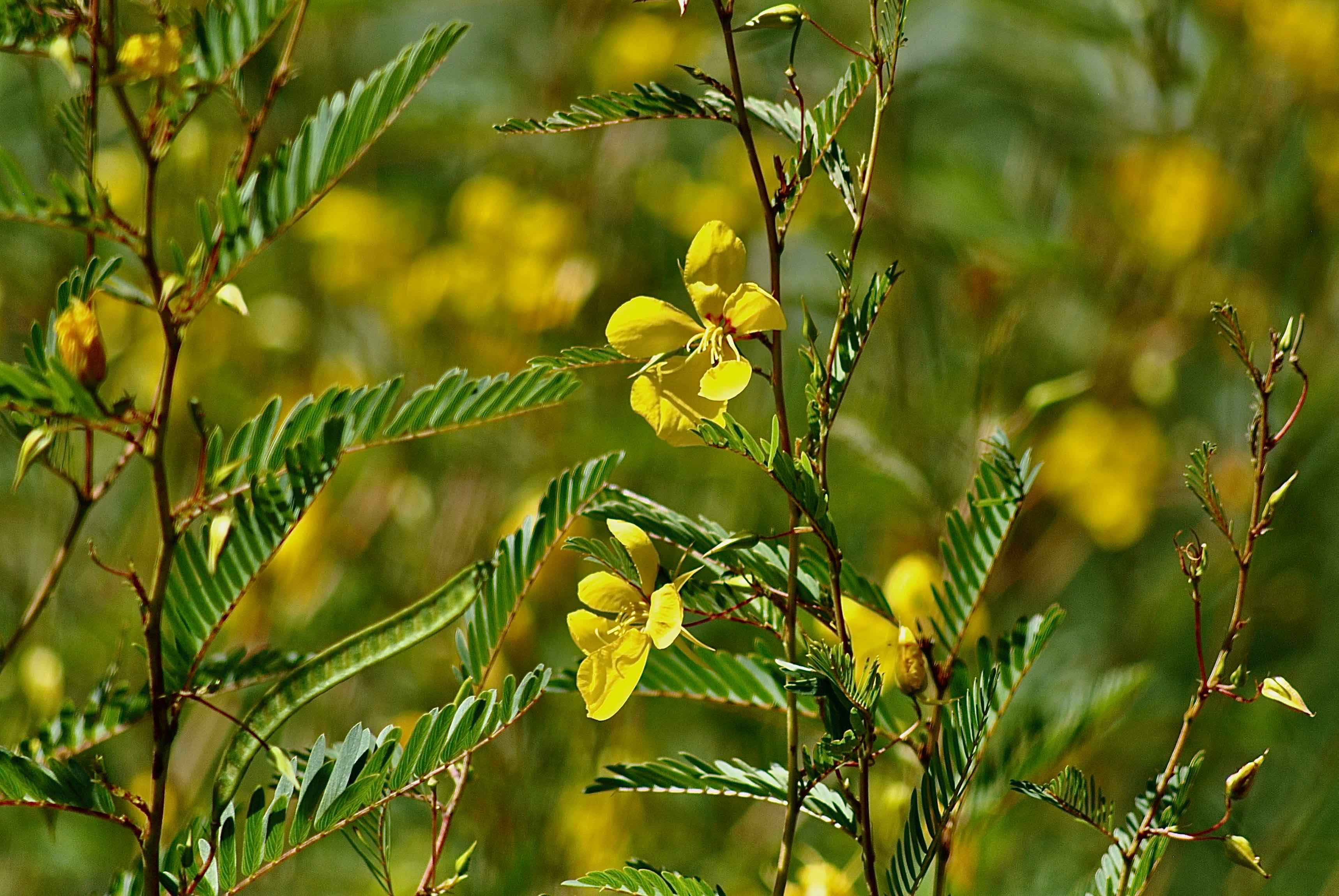
Partridge pea photographed at Seabranch Preserve State Park, Stuart, Martin County, in May 2015.
Partridge pea, Chamaecrista fasciculata, is an important source of honey, according to the U.S. Department of Agriculture, but the odd thing is the source isn’t the plant’s eye-catching yellow flowers but rather a gland that sits at the base of each leaf called a nectary.
The flowers don’t produce any nectar. Yet, we repeat, partridge pea is a major source of honey.
It's a Florida native found throughout almost all of the state's 67 counties. It's also native to most of the United States east of the Rockies. The exception: northern portions of New England.
Plants having nectaries are fairly common — they're believed to have evolved as a kind of defense mechanism. The glands attract ants and parasitic wasps that attack plant-eating insects that, undeterred, might do serious damage. But, generally, they also produce nectar the old-fashioned way, through flowers.
Partridge pea is a small, shrubby plant that tops out at about three feet tall, with about the same spread. It has compound leaves — each with between 7 and 14 pairs of leaflets — that are arranged alternately along the stem. Touch the leaves and they might fold up. Blooming season is spring through summer; flowers appear along the stems. There may be multiple buds on a stem but they flower only one at a time. The flowers are bright yellow, though we've seen one plant with white (see photo below). They're large, each with five petals, the upper petals marked with red spots at the base.
Favorite habitats include scrubs, sandhills, dry pine flatwoods and coastal uplands — places with well-drained, sandy soil. It prefers full sun but will take to shade as well. It is drought tolerant, not surprising given where it grows. It is an annual.
Partridge pea provides cover for a number of small animals. The common sulfur butterfly uses it as a larval host: it lays eggs on the plant, and once hatched, the caterpillars eat the leaves. It's also a host for the ceranus blue, little yellow and gray hairstreak butterflies.
Where it grows in colder climates, partridge pea seeds are major grub for northern bobwhite and other quails, according to the USDA, because the seeds remain in sound condition through winter and into spring. The foliage is highly nutritious for grazing animals, but the seeds are toxic. Partridge pea is sold by some nurseries in South Florida and seeds are readily available on the internet. It's used as an ornamental, as a butterfly attractant and, as noted above, for honey production. But its utility doesn't end there. It's also grown as a ground cover because of its ability to hold soil.
Partridge pea is a member of Fabaceae, the pea family. Other common names include sleeping plant, prairie partridge pea, showy partridge pea, prairie senna, large-flowered sensitive-pea, dwarf cassia, partridge pea senna, locust weed, golden cassia and bee flower.
Photo Gallery — Click on photo for larger image
U.S. Department of Agriculture Distribution Maps
